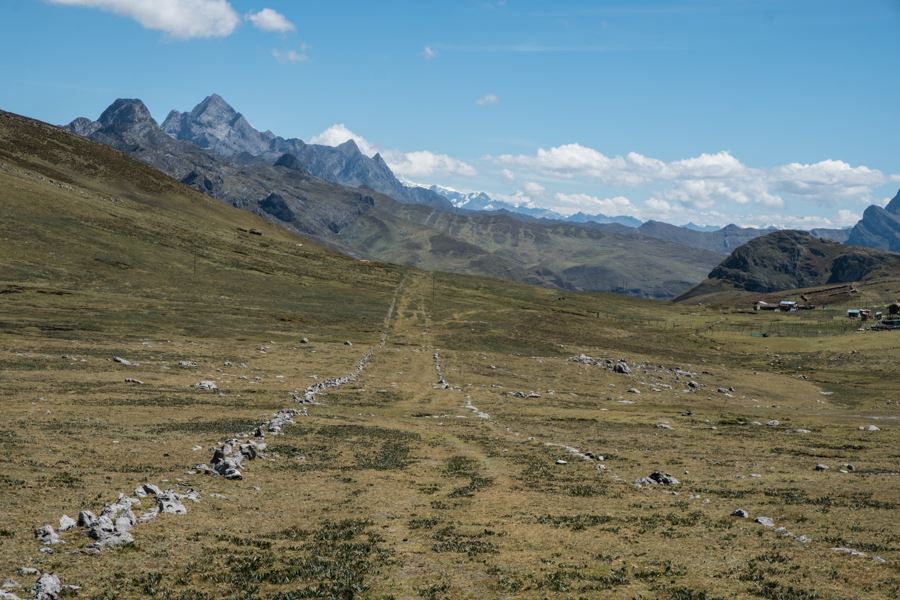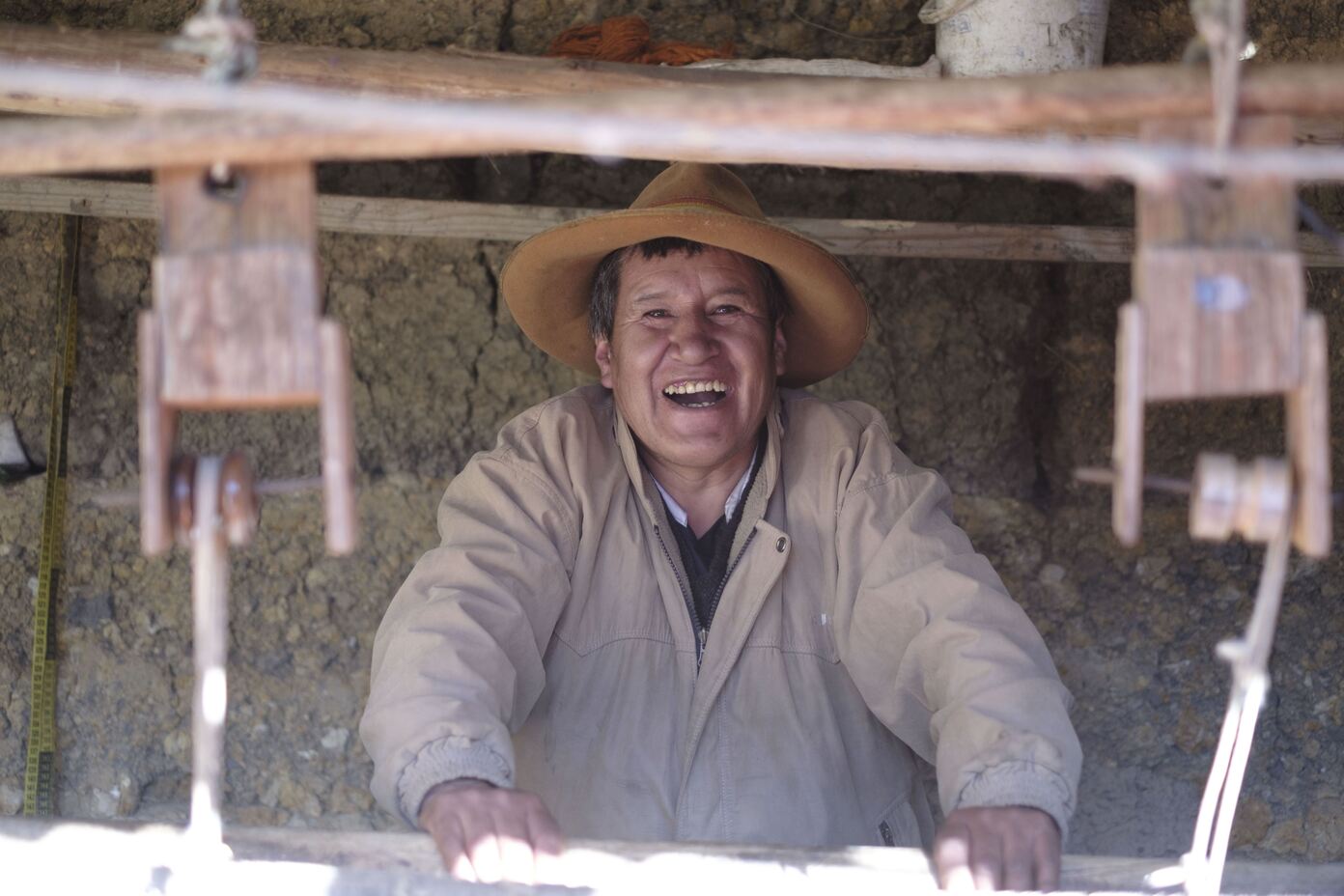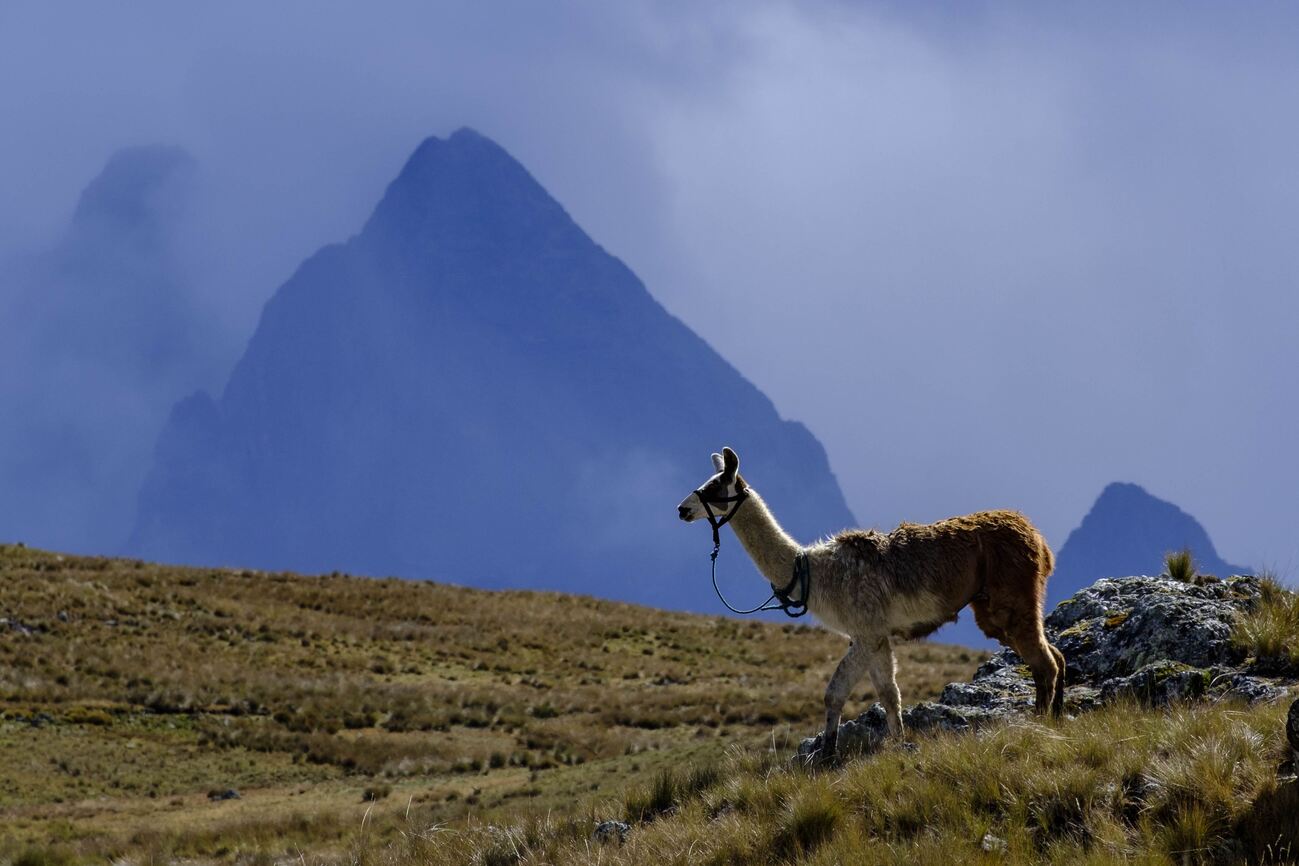Why you absolutely need to hike the Great Inca Trail
The 25,000-mile road network known as the Qhapaq Ñan was the glue that held the Inca empire together. For a road to survive, it has to be walked. Which is why, for the first time ever, we’re offering luxury treks along select stretches of the road. You’ll traverse pristine Andean scenery, centuries-old traditional villages, and some of the finest ruins in all of Peru – and you’ll do it all with a train of llamas.

You’ll wake before the sun shows its face from behind the snowcapped Andes and eat breakfast overlooking remote, mirror-calm lakes. You’ll walk roads built 600 years ago and in so doing gain some insights into the brilliance of the people who built them. You’ll camp in ancient Inca refuges and get to meet their modern custodians and experience their way of life. You’ll learn how to pack and lead a llama and you’ll see ancient Inca farming, weaving, and cooking techniques at work. You’ll set off expecting ‘a hike’ and come home having experienced a culture and a way of life.

What sets it apart from other treks
The Qhapaq Ñan is an ancient trade route which connects the most important towns in the Andes. It passes through spectacular scenery but – unlike many other treks – it also passes through centuries-old Andean villages and tiny agricultural communities. Hiking the Qhapaq Ñan does involve some really rugged and remote landscapes (there are days when you will not see another soul) but it also entails vivid cross-cultural contact that is impossible to replicate. The Araujo family of weavers at Quenajirca being a case in point. What’s more, the road itself is far wider and more imposing than any of the other Inca Roads (the Inca Trail pales in comparison) and by walking it you are actively participating in its preservation.
Customizable comfort
Don’t be fooled by the unsurpassed Andean landscapes and extremely remote location: this is one of the most comfortable treks on offer in South America. All our treks are completely customizable and we’re only too happy to run the trek for two people – in fact this is a major part of our business. You’ll be served three hearty meals a day and will also be provided with snack packs to nibble on the way and legendary ‘lonches’ (mid-afternoon teas) upon arrival at camp. The tents, sleeping bags and mattresses provided are all top notch, and the hotels on either end of the hiking component provide the luxury you surely deserve. You’ll be accompanied by a guide, several llameros and a chef and your luggage will be carried by llamas (how cool is that?), so you’ll only have to hike with a small daypack.

The main attraction
On the section we hike, the road itself is something to behold. Sixty feet wide at some points, it cuts through the Andes like a latter-day Interstate, showing scant regard for the extreme topography of the area. Of course, the road served a massive logistical purpose within Tawantinsuyu (the Inca Empire) but its construction was also a resounding show of force by the Inca rulers as it demonstrated, in no uncertain terms, their God-like ability to tame nature. The Inca Trail to Machu Picchu, although extremely impressive in its own right, does not have any of these wide, boulevard-like sections and it also sees 500 visitors per day.
Be prepared
Our numerous multi-day routes, including our 20-day expedition on the Royal Inca Road, cover some pretty extreme terrain across a total distance of 40 miles, so decent boots and at least average fitness are essential. It’s also very important to bear in mind that you’ll be hiking at altitudes of up to 16,000ft. We’d advise bringing some Diamox along (I didn’t use mine but it was nice to know I had it) and don’t be afraid to chew coca leaves. Also try to factor in some acclimatization before you hike: if you plan on visiting Cusco and Machu Picchu (around 11,000ft) it makes sense to do that first and then trek later. Either way, your customized group and highly-trained guides mean that we can easily adjust the itinerary according to your needs.

When to visit
While we can run the treks at any time of year, we highly recommend hiking between April and November when the Andes are cold but (mostly) dry.
Why llamas?
Most trekking companies use a combination of human porters, donkeys, mules and horses to carry luggage. We made a conscious decision to use llamas, for several reasons:
To truly understand the Incas, you have to experience the Qhapaq Ñan as they would have. Llamas were the only pack animals used by the Incas.
Llamas have soft, padded feet which do no damage to the road. Hooved animals have caused untold destruction to ancient Inca roads and paths.
Llamas are far more nimble than horses, and can go places no horse would dare. They’re also undeniably awesome and extremely photogenic.

Some history
We’ve blogged at length about the Qhapaq Ñan’s glorious past. Just click on the links to find out more.
Qhapaq Ñan is a Quechua term meaning, quite simply, ‘beautiful road’. This 25,000-mile network spanned seven modern countries.
The network comprised two main highways – the one we walk which crosses the spine of the Andes and another that follows the coast – fed by myriad transversal roads.
Dotted along the road, every 15 miles or so, were tambos or refuges. Their locations are so convenient and spectacular that we use them as campsites on our trek.
The Inca built incredible rope bridges across the numerous rivers and ravines in their territory. Almost all of the bridges have been destroyed, but one survives to this day.
The road was so well-maintained that Inca relay runners or chaskis who ran from tambo to tambo could get a message from Quito to Cusco (1,250 miles) in little over a week.
The road network was also used to move troops, subjects and goods throughout the empire – our most popular itinerary ends at the key administrative hub of Huanuco Pampa.
Cruelly the brilliant roads contributed to the Incas’ downfall as they allowed the Spanish to conquer most of the empire in little over a year.
Not all UNESCO World Heritage Sites are created equal. Spanning six countries and 273 distinct sites, the Qhapaq Ñan’s nomination was a global first.

A message from our founder
Nick Stanziano experienced the Qhapaq Ñan first-hand on a 2,000-mile hike along the Qhapaq Ñan from Cuenca in Ecuador to Cusco in Peru. But he’s well aware that getting to Cusco was but one chapter in the story of the Qhapaq Ñan’s preservation. Here’s what he had to say about the experience: "It's an experience like nothing else in the world that immerses you in a world tucked away from modern life; where cultures and language go back millenia. It's the Grand Tour of the Andes!"

One last thing…
Whatever you do, do not confuse this trek with the Inca Trail. The Inca Trail is a tiny (albeit very impressive) 21-mile section of the Qhapaq Ñan which culminates at Machu Picchu. While definitely a wonderful experience in its own right, the Inca Trail is infinitely more crowded and less remote than the Qhapaq Ñan and absolutely no pack animals (not to mention llamas) are allowed on the strictly regulated route.
The terms ‘once in a lifetime’ and ‘bucket list’ are bandied about far too much in the travel industry, but sometimes they are apt. Contact one of our Destination Experts to find out more about trekking on the Great Inca Trail.
Originally published August 2017.